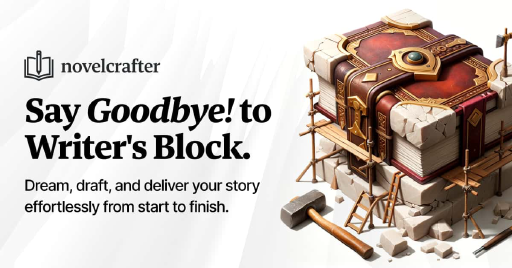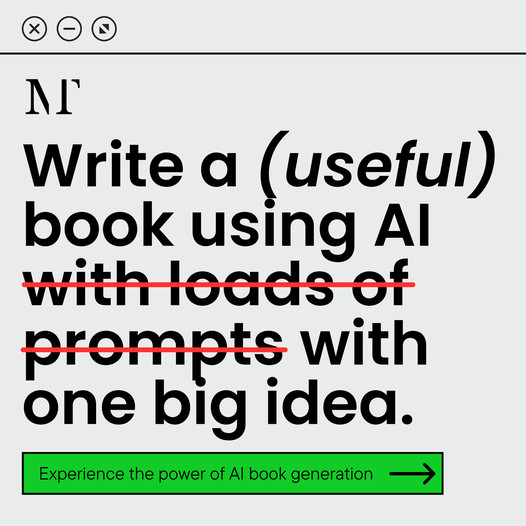Crafting Memorable Characters
You know when a fictional character just sticks with you, like butter on toast? That’s the magic of smart character building. Those well-rounded folks you meet on paper can tug at your heart like a teenage crush.
Importance of Well-Developed Characters
Think about a character you can’t forget. Chances are, they were built with all the right flaws and dreams. When you’re writing, these well-thought-out souls become buddies your readers root for—taking them on wild emotional rides. Want someone to lose track of time? Give them a character journey they can’t resist.
| Why Good Characters Matter | What They Do |
|---|---|
| Create Emotional Ties | Your readers might just adopt them as family. |
| Propel the Story | Characters’ choices shape the plot. |
| Make a Mark | Sticking around long after the book’s closed. |
Got a thirst for more on creating folks who feel real? Check out our article on how to create realistic characters.
Techniques for Creating Characters That Resonate
-
Craft a Juicy Backstory: Ever met someone without a past? Nah. Let your characters’ history put that twinkle in their eye.
-
Lay Out Their Motivations and Goals: Dreams and desires fuel everything. Give them the “why” behind their “what” and watch readers hit the edge of their seats.
-
Sprinkle Some Flaws: Perfect is boring—characters need quirks! Just like your neighbor who’s always forgetting their keys.
-
Paint Them with Words: Don’t skimp on descriptions. Dress them up in rich, vivid language that paints full pictures.
-
Fine-Tune Their Voices: Make their words pop with personality. Dialogue should sing like a playlist full of unique tunes.
Master these tricks and your character creation will hit new heights. If you’re itching to crank up your creativity even further, our stash of creative writing exercises might do the trick.
Understanding Your Characters
Creating characters folks won’t forget involves really knowing what makes them tick—their background, what keeps them up at night, and those little, sometimes ugly, imperfections. Let’s break it down to help you whip up characters that stick with your readers.
Character Background and History
Everyone’s got a story, right? Your character’s past is a treasure trove for their personality, beliefs, and way they react to things. Here’s what you wanna chew over when figuring out where they come from:
| Element | What’s It About? |
|---|---|
| Family History | What kind of kooky or cozy family did they grow up in? |
| Cultural Background | What cultural flavoring spices up their identity? |
| Past Experiences | Any life-changing moments that make them see things differently? |
| Education | Got any school smarts or street smarts? |
| Important Relationships | Who matters most in their world? |
Digging into their backstory gives your characters oomph and helps folks reading your stuff feel a connection. If you’re curious about diving deeper into their histories, you might wanna peek at how to create realistic characters.
Motivations and Goals
What gets your character outta bed in the morning? That burning desire, those dreams or fears drive the story forward. Pin down what they’re itching to achieve, win, or avoid losing. This makes them relatable and spices up the dramatic soup.
| Motivation Type | Example |
|---|---|
| Personal Goals | Chasing after love, fame, or a bucket of cash |
| Moral Objectives | Standing up for the little guy or fighting the good fight |
| Survival Instinct | Protecting their own or keeping the lights on |
| Revenge | Getting back at someone for old wounds |
Just remember, what drives them today might take a U-turn tomorrow, especially when the going gets tough. If you’re itching for more on motivations, check out how to write better stories.
Flaws and Imperfections
Nobody’s a saint, and that’s the charm. Your character’s quirks and screw-ups make them real. They might just be what endears them to your readers. Think about these hiccups along the way—flaws that could come with personal growth or end in a heap of trouble.
 What Poetry Feels Like
What Poetry Feels Like| Flaw Type | What’s Wrong Here? |
|---|---|
| Emotional Flaws | Constant worry, green-eyed monster, fear of tying the knot |
| Moral Flaws | Can’t trust ’em, backstabber, all about themselves |
| Behavioral Flaws | Hot-headed, can’t help but gamble, always up for trouble |
| Physical Flaws | A limp, a scar, anything that makes ’em feel un-pretty |
Giving your characters some rough edges lets folks in on their pains and struggles, and it’s a springboard for character development. For scribbles on writing nuanced characters, slide on over to how to create emotional characters.
Putting these building blocks together shapes folks your readers will remember—the kind that reaches out of the pages, grabs your attention, and won’t let go. So, mix in these layers, amp up your character’s depth, and keep those pages turning.
Bringing Characters to Life
Creating characters who stick with readers is all about sharp details and real conversations. By being attentive to what makes each character tick and giving them their own voice, you make them jump off the page and stay with your audience.
Descriptive Detailing and Characterization
Characterization involves crafting personalities that readers can connect with. Paint a picture of your character with descriptions that cover their looks, actions, and feelings. Focus on traits, wardrobe, and little quirks that reveal their true selves.
Key Elements of Descriptive Detailing
| Element | Description |
|---|---|
| Physical Traits | Height, hair color, eye color, and other notable features. |
| Clothing Style | Fashion that hints at their personality or status. |
| Body Language | Gestures, posture, moves—every little action tells a story. |
| Facial Expressions | Emotions shown through their expressive faces. |
Beyond the surface, dig into a character’s past to give them depth. Think about how their childhood, key life moments, and experiences shape how they see the world and act in it. This foundation helps you write realistic reactions that resonate.
For more tricks on building strong characters, check out our guide on creating realistic characters.
Dialogue and Unique Character Voices
Genuine dialogue is key to character development and showcasing their personality. Make sure every character speaks in a way that aligns with their background, nature, and goals.
Components of Effective Dialogue
| Component | Description |
|---|---|
| Vocabulary | Word usage that mirrors their education and personality. |
| Speech Patterns | How they structure sentences, their rhythm, and their use of slang or expressions. |
| Context and Emotion | Words that pack emotion and show reactions to stuff happening around them. |
When crafting dialogue, aim for it to sound effortless—drop the formalities. Read it aloud to make sure it’s believable; you want each character to have their own tone. For advice on polishing your dialogue skills, see our article on writing dialogue tips.
With strong descriptions and lively dialogue, your characters will shine bright, leaving a mark on your readers. For more on building fascinating characters, peek at our writing tips on making better stories.
Character Arcs and Development
Character arcs are like the secret sauce that makes your characters pop off the page. Knowing how your characters change gives your tale a heartbeat, making readers bond with them like old friends.
Arcs and Growth
Picture a character arc as the rollercoaster ride your characters are on during the story. It’s all about the ups and downs, where they learn and evolve with everything that gets thrown at ’em. This growth shows their personality, making them feel like real people you wanna root for, chat with, or even argue against.
| Arc Type | Description | Example Character Traits |
|---|---|---|
| Positive Arc | Character grows, beats the odds | More confident, kinder |
| Negative Arc | Character goes downhill or worsens | Bitter, self-centered |
| Flat Arc | Character stays steady | Steadfast morals, reliable |
Challenges and Conflict
For a character to really shine, they’ve gotta face some serious curveballs. These get them to shape up or ship out. Whether it’s all the chaos outside—from jerks at work to Mother Nature—or the battles inside, like fears nipping at their heels, it all pushes them to grow.
| Type of Conflict | Description | Example Situations |
|---|---|---|
| External Conflict | Battles with outside forces | Heated rivalries, wild weather |
| Internal Conflict | Wrestling with their own demons | Tough choices, figuring out who they are |
Conflict’s like the gas pedal for your story, pushing everything forward while forcing characters to face their flaws and pull a Phoenix-like transformation.
Resolutions and Transformations
Wrapping up character arcs is the moment of truth. It shows when the dust settles and characters look back at the battlefield, carrying scars and lessons like medals. It’s about growing wiser, saying goodbye to old ghosts, or maybe chasing a new dream.
| Resolution Type | Description | Example Outcome |
|---|---|---|
| Redemption | Learns from mistakes, becomes better | Turns over a new leaf |
| Acceptance | Comes to terms with life | Finds peace within |
| Transformation | Makes massive changes | Heads off on a new career |
When you pour your heart into those arcs and show off those tough spots and triumphs, your characters become living, breathing legends to your readers. Wander through more about how to create realistic characters or jump into writing advice for new authors to keep honing your craft.
Building Connections and Character Bonds
Making compelling characters isn’t just about individual quirks; it’s about how they mix with others in their world. These connections and bonds shape who they are and steer their choices in ways that make them come alive to readers.
Mixing with the Crew
Every character in your story brings their own flavor to interactions based on who they are and where they’ve been. These interactions don’t just drive the plot—they also draw readers in, making them care about these folks as if they’re real. Let’s sneak a peek at some interaction styles:
| Type of Interaction | What’s Going Down |
|---|---|
| Conflict | Sparks fly, setting the plot on fire. |
| Support | Friends in need make for an unbreakable bond. |
| Rivalry | Keeps things spicy when characters challenge each other. |
| Romance | Adds layers and gets to the heart of motivations. |
Think about how every character’s past and personality spice up their dealings with others. Use these bonds to peel back layers of who your characters truly are.
Sparks and Tension
Characters give each other a special kind of energy when they click—or clash. Whether they’re attracted, on the job, or straight-up enemies, the tension keeps your readers turning pages. Here’s how to get those sparks flying:
- Opposites Collide: Dive into pairings where characters think or act differently. It makes for stories that grip and don’t let go.
- Common Goals: Characters working towards the same stuff build team vibes but can also bump heads when strategies don’t match.
- Lingering Emotions: If they’ve got past drama, that tension keeps the plot moving and the pages flipping.
Getting that chemistry and tension just right hooks your readers emotionally. For a deep dive on character emotions, check out our article on creating emotional characters.
Backup Players and Their Moves
The folks on the sidelines enrich the main story. They’re not just there for show; they’ve got their own roads to travel, which in turn affect the main character. When you’re giving your supporting cast some love, think about:
- Standout Traits: Each side character should have something special, balancing out the main player’s traits.
- Woven Tales: Friendship, rivalry, or love with the protagonist can spin off into subplots that click with readers. What role do these connections play in the hero’s development?
- Challenges and Growth: Side characters can push the main one, sparking growth. How do they overcome these bumps?
Rolling out strong bonds between characters enriches your story world. For tips on crafting unforgettable characters, peek at our article on creating realistic characters.
Sustaining Interest and Engagement
Creating characters that stick in your mind takes more than a flashy entrance. It’s about keeping the reader hooked the whole way through your story. Here’s how you can make sure your readers stay glued.
Keeping Characters Consistent
You’ve got to keep your characters acting true to themselves, right? So, think of their behavior, way of talking, and growth as pieces of a puzzle that has to fit just right. Your characters should react in ways that feel just like them, aligning seamlessly with their backstories and inner drives. You want your readers to trust that what the characters do matches who they are.
When building your characters, keep these traits in mind:
| Attribute | What It Means for Your Character |
|---|---|
| Personality | Are they shy, or do they love taking risks? Know these basics! |
| Values | What really matters to them? This shapes their choices. |
| Backstory | Where did they come from? This affects how they think and feel now. |
| Goals | What are they reaching for in life? Keep this clear and relatable. |
If you want your characters to feel like real people, check out our tips on creating characters that jump off the page.
Creating Memorable Moments
These are the times that get readers really attached to your characters—the kind of moments that make readers think about your story even after they’ve put the book down. They might be touching, hilarious, or even earth-shattering. When your character’s main qualities shine or their journey takes a sharp turn, it makes them unforgettable.
Consider these moments you could include:
| Moment Type | Why It Matters |
|---|---|
| Vulnerability | Maybe they confess a secret fear that shows their true self. |
| Triumph | They conquer something huge, showing how much they’ve grown. |
| Humor | A silly mistake that just screams their personality quirks. |
| Conflict | An inner tug of war where a tough choice is made. |
While crafting these scenes, make them hit hard on what the character is all about. If you’re hungry for more tips, dive into our guide on storytelling that hooks readers.
Evolving Characters Over Time
Your story doesn’t stand still, and neither should your characters. Watching characters learn and grow through all sorts of messes keeps people reading because it mirrors our own ups and downs. We love seeing characters who change and face their fears.
Think about your character’s path like a three-step dance:
| Stage | What’s Happening With Your Character |
|---|---|
| Initial State | Who are they at the start, with all their imperfections? |
| Development | How do their troubles and friendships shape them? |
| Final State | Who have they become after everything they’ve been through? |
By giving your character a worthwhile journey, your readers will feel a deep connection. If you’re looking to deepen those character arcs, swing by writing characters that stick with readers.
Keeping your characters steady, crafting unforgettable moments, and letting them change will have your readers cheering them on until the very last page. This care and attention mean your story won’t just be read, it’ll be loved.


 Grab my poetry book, 'we're all just wanderers in the end' Here
Grab my poetry book, 'we're all just wanderers in the end' Here AD: Your Book Finally Written...
AD: Your Book Finally Written...